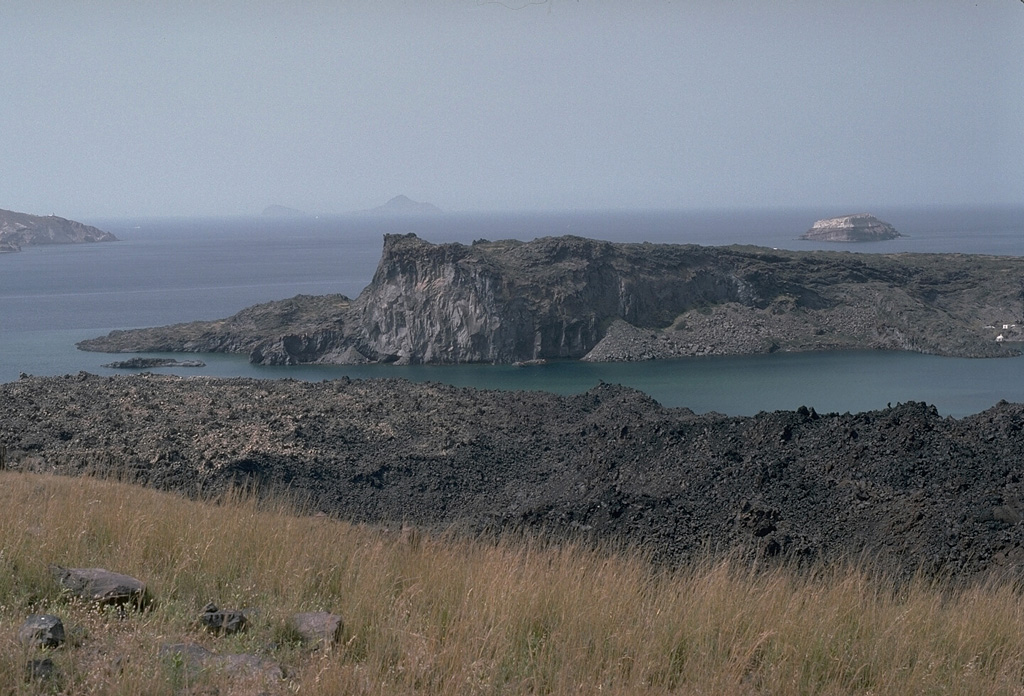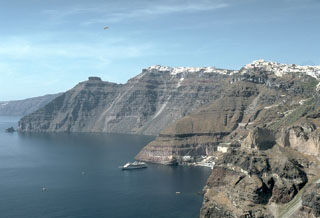Global Volcanism Program | Image GVP-00116

Palaea Kameni (Thia) Island (center) was formed by the extrusion of lava flows during a 46-47 CE eruption. This was the second documented eruption producing a new island in the caldera bay. The black lava flows in the foreground on Nea Kameni island were emplaced during an 1866-1870 eruption. The small island in the right distance to the SW, capped by light-colored rocks of the 3,600-year-old Minoan eruption, is part of the caldera wall that extends beneath the sea surface to the Akrotíri Peninsula on the extreme left.
Photo by Lee Siebert, 1994 (Smithsonian Institution).
![]() This image is made available under the Public Domain Dedication CC0 license, but proper attribution is appreciated.
This image is made available under the Public Domain Dedication CC0 license, but proper attribution is appreciated.
Galleries: Volcanic Outcrops
Keywords: caldera | outcrop | geology | deposit | lava flow

Santorini
